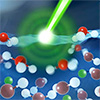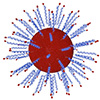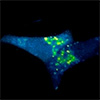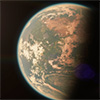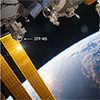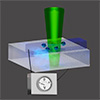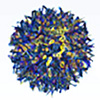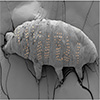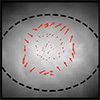Home > Press > Next-generation drug delivery innovation! DGIST develops precision therapeutics using exosomesAbstract:A joint research team led by Professor Kyungmoo Yea from the Department of New Biology and Professor Daeha Seo from the Department of Chemistry and Physics at DGIST (President Kunwoo Lee) has developed a modular protein adapter...
Blog
Observing the ultrafast electrical charging of liquids
Apr 25, 2025 Researchers used a light-based technique to observe the fast formation of electrical double layers, validating models for membranes and energy storage devices. (Nanowerk News) Charged surfaces in contact with liquids – such as biological cell walls or battery electrodes – attract oppositely charged ions from the liquid....
Structure dictates effectiveness, safety in nanomedicine
Apr 25, 2025 Structural precision drives therapeutic innovation, ultimately benefiting patients. (Nanowerk News) Historically, the vast majority of pharmaceutical drugs have been meticulously designed down to the atomic level. The specific location of each atom within the drug molecule is a critical factor in determining how well it works and...
Polydopamine nanoparticles enable precise light-driven activation of neurons and muscles
Apr 25, 2025 Researchers use biocompatible polydopamine nanoparticles and near-infrared light to remotely trigger activity in neuron and muscle cells with minimal side effects. (Nanowerk Spotlight) Remote control over the behavior of individual cells has remained one of the more difficult problems in neuroscience and muscle physiology. The ability to...
Astronomers find Earth-like exoplanets common across the cosmos
Apr 25, 2025 New study debunks a single planet-formation scenario. (Nanowerk News) Using the Korea Microlensing Telescope Network (KMTNet), an international team of researchers has discovered that super-Earth exoplanets are more common across the universe than previously thought, according to a new study. By studying light anomalies made by the...
The ‘spacecraft speedometer’ is a new, innovative way to track satellites
Apr 25, 2025 A new instrument can predict satellite location without the use of GPS. (Nanowerk News) Researchers at Los Alamos National Laboratory and the United States Air Force Academy have developed a novel instrument called the Spacecraft Speedometer — a compact, resource-efficient device — capable of determining the velocity...
An earth-abundant mineral for sustainable spintronics
Apr 25, 2025 Iron-rich hematite, commonly found in rocks and soil, turns out to have magnetic properties that make it a promising material for ultrafast next-generation computing. (Nanowerk News) In 2023, EPFL researchers succeeded in sending and storing data using charge-free magnetic waves called spin waves, rather than traditional electron...
Artificial mitochondrial nanorobots deliver energy to damaged hearts through oral administration
Apr 24, 2025 Scientists have developed oral nanorobots that target damaged heart tissue, deliver energy, and repair mitochondrial function, offering a novel approach to treating ischemic heart disease. (Nanowerk Spotlight) Mitochondria serve as cellular power plants, converting nutrients into adenosine triphosphate (ATP) – the energy molecule that fuels cellular functions....
‘Tattooing’ living tardigrades with nanoscale patterns
Apr 24, 2025 New ice lithography method enables creation of nanoscale patterns on living tardigrades, advancing integration of biological systems with technology for sensing and monitoring. (Nanowerk Spotlight) The merging of engineered microscopic patterns with living organisms promises to revolutionize medicine, environmental monitoring, and biological research. Imagine microscopic markers that...
Mysteriously mundane turbulence revealed in 2D superfluid
Apr 24, 2025 Researchers have developed a new tool for measuring velocities in a Bose-Einstein condensate superfluid and applied it to studying superfluid turbulence. (Nanowerk News) Despite existing everywhere, the quantum world is a foreign place where many of the rules of daily life don’t apply. Quantum objects jump through...


